This is our roll call of the top 100 celestial targets that we think every astronomer should try and see.
There’s something for everyone on the following list, from breathtaking phenomena you can see while stargazing with the naked eye to trickier deep-sky objects that you’ll need a big telescope to track down.
Some are regular sights in our night skies, while others can only be seen with a bit of planning.
If you can already confidently tick all 100 off our list, that's really quite impressive.
If you've seen none, or still have some left to discover, then what are you waiting for?!

Naked-eye sights
1. A satellite passing overhead
As satellites orbit Earth, they catch the sunlight and reflect it down to the ground which is why we can see them in the night sky. If it’s dark where you are and you happen to see this glint it can be quite spectacular, especially if you aren’t expecting it. A quick search online will reveal numerous websites and apps that tell you when a satellite is going to be visible from your location.
2. The Northern Hemisphere summer Milky Way
Seeing the Milky Way in Sagittarius and Scutum is one of the highlights of a northern hemisphere summer night. Either sit back and take it all in with the naked eye, or explore the rich star fields with binoculars.
3. The Belt of Venus
When the Sun goes down on a clear night you might be able to spot a pink and purple band above the horizon opposite the sunset. This beautiful atmospheric phenomenon is known as the Belt of Venus.
4. Earthshine
If you’ve ever seen a thin crescent Moon you’ve probably also seen earthshine. This is where the unlit portion of the Moon is illuminated by light scattered off our planet's oceans and cloud tops.
5. The Cygnus Rift
The Milky Way cuts straight through the constellation of Cygnus, as does a dark band known as the Cygnus Rift. The rift is the silhouette of vast clouds of dust and gas within our Galaxy.
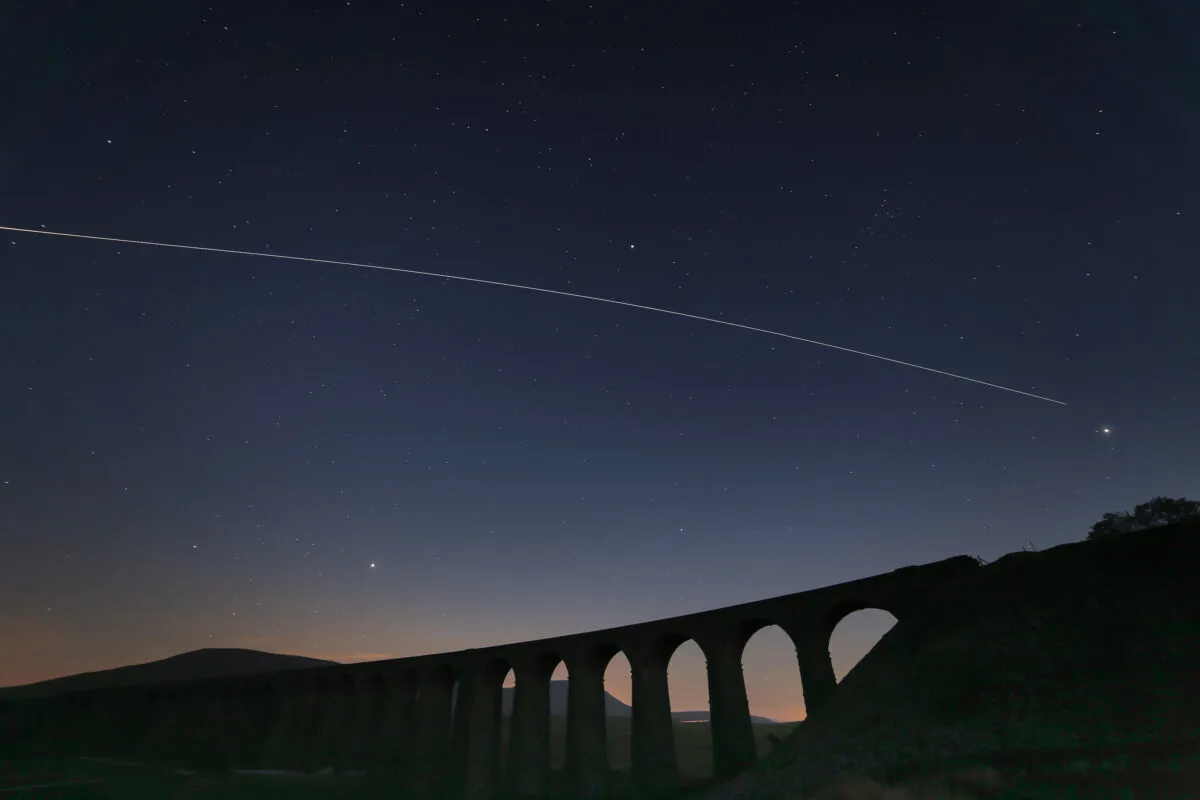
6. A bright pass of the ISS
Sometimes it’s all too easy to forget that there’s a huge laboratory orbiting Earth. Seeing the International Space Station shining brightly as it passes overhead dramatically brings it all home.
7. A circumzenithal arc
This colourful atmospheric phenomenon is only visible during the daytime, high up overhead. These rainbow-coloured arcs are caused by ice crystals refracting sunlight.
8. A noctilucent cloud display
In the early summer months, after sunset and before sunrise, it’s sometimes possible to see noctilucent clouds, or 'night shining' clouds. Caused by tiny ice crystals high in our atmosphere reflecting light from the Sun, these clouds create beautiful glowing patterns.
9. A big meteor shower
Sometimes the conditions are right for one of the big meteor showers – the Geminids, Leonids and Perseids in particular – to put on a really cracking show, with heightened levels of activity. If you catch one it won’t be a night you soon forget. Find out when the next meteor shower is taking place.
10. A meteor fireball
It’s not uncommon to see a few shooting stars while out observing, but meteor fireballs are always memorable. Some leave a glowing trail behind them for a split second; occasionally they break up into several glittering fragments.

Equipment: Astro-modded Nikon Z6 mirrorless camera, Nikon Z 50mm lens
11. The southern hemisphere Milky Way
Truth be told, the southern hemisphere Milky Way is more impressive than what’s visible far north of the equator. On a clear night the area from Sagittarius and Scorpius to Carina and Crux is breathtaking.
12. The Magellanic Clouds
Appearing as misty patches of light to the naked eye, the Large and Small Magellanic Clouds – both galaxies near to the Milky Way – are surely on every astronomer’s wish list. You’ll need dark, transparent skies to see them well.
13. A lunar halo
Just occasionally, often when the Moon is near to full, you might spot a large ring of faint light around our nearest neighbour. This is an atmospheric phenomenon known as a lunar halo, created by ice crystals refracting the light from the Moon.
14. The aurora
Few natural phenomena evoke such intense feelings of awe as the aurora. The source of many myths and legends, a strong auroral display is one of the most beautiful and dynamic celestial events that can be seen.
15. The Zodiacal Light
You’ll need really clear, dark skies to see the Zodiacal Light, which amazingly is light scattered off tiny dust particles in the plane of the Solar System. Spring and autumn are a good time to look out for it.
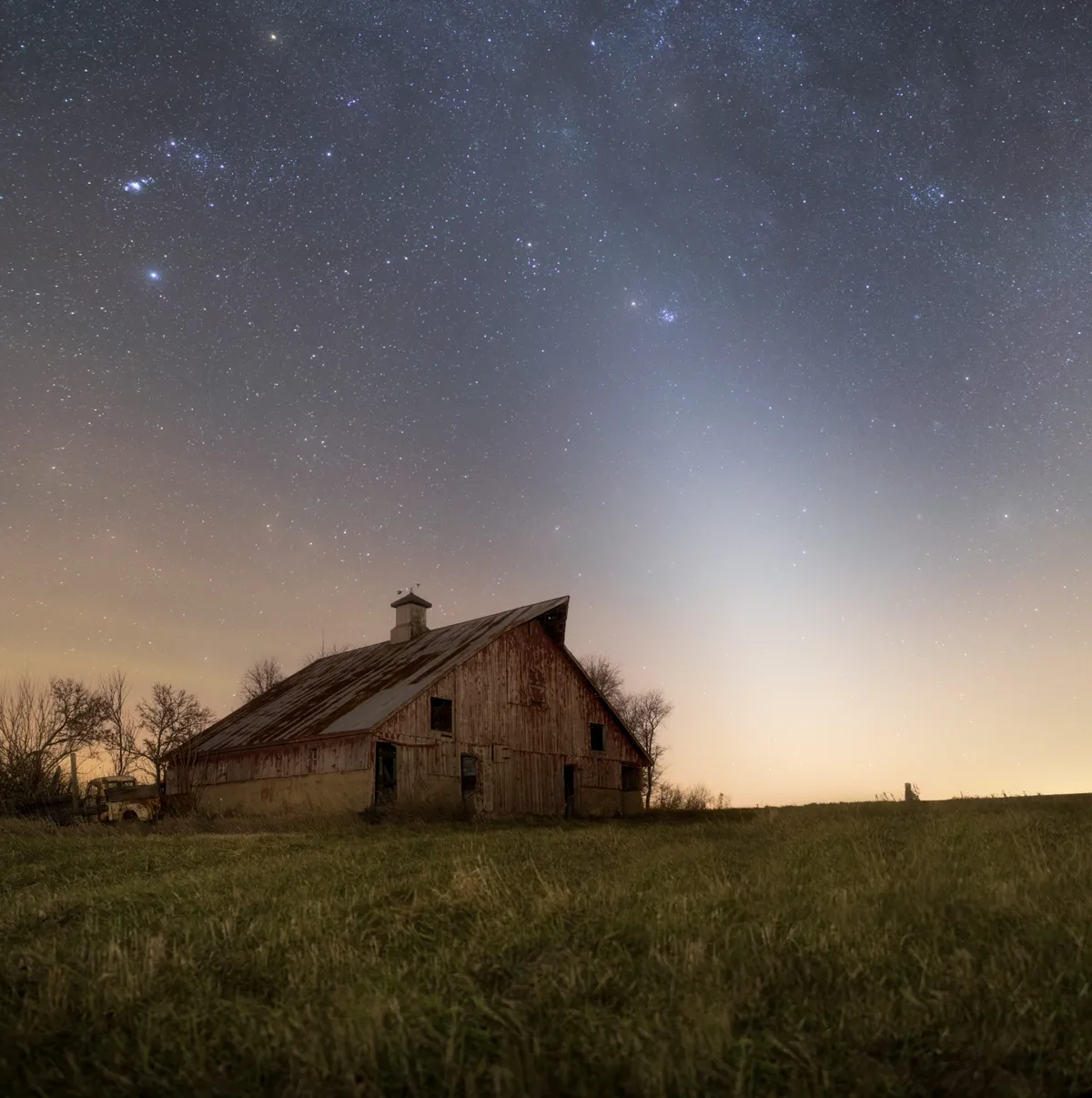
16. The Gegenschein
Formed in the same way as the Zodiacal Light, the Gegenschein, or ‘counterglow’, also requires incredibly dark, transparent skies to see. It appears as a patch of extremely faint light directly opposite the location of the Sun in the sky, hence its name.
17. A bright naked-eye comet
As astronomers we all long for the appearance of a bright naked-eye comet with glowing tails resplendent against a starry sky. Find out what's visible currently in our guide to comets and asteroids tonight.
18. A daylight meteor fireball
If you’ve seen a daylight meteor fireball, consider yourself extraordinarily lucky. Spotting a space rock blazing across the daytime sky ranks among the most spectacular sights in this list.
Solar sights

19. A solar prominence
Solar prominences are huge tendrils of plasma that appear to reach up above the Sun’s limb. Watching their shape change over a few hours is fascinating, but you will need a specialist hydrogen-alpha solar telescope to see them. Never observe the Sun with the naked eye or anything but certified solar-viewing equipment. That goes for all the solar targets on our list.
20. A sunspot
When powerful magnetic fields in the Sun stop hot material from rising, a cooler region forms on the Sun’s ‘surface’. These ‘sunspots’ appear black in contrast to the bright surroundings. They can be seen with a telescope fitted with a specialist solar filter.
21. A solar filament
A solar filament is exactly the same object as a prominence except it’s seen in silhouette against the bright disc of the Sun. Like prominences, you’ll also need a specialist hydrogen-alpha solar telescope to see them.
22. A total solar eclipse
When it comes to celestial events the king of them all has to be the total solar eclipse. Caused when the Moon completely obscures the disc of the Sun they are a truly awe-inspiring experience. Find out when the next eclipse is taking place.
23. An annular eclipse
An annular solar eclipse occurs when the Moon doesn’t completely block the blazing disc of Sun, creating the famous ‘ring of fire’. Since some part of the Sun is always visible, you must use a specialist certified solar filter to watch an annular eclipse safely.
24. The transit of Mercury
A transit of Mercury is when tiny planet Mercury passes across the face of the Sun. You’ll need to
equip your telescope with a certified solar filter to view the event safely. The next transit of Mercury occurs on 13 November 2032.

25. A sundog
On a sunny day, when the sky is strewn with wispy clouds, it’s not uncommon to spot a parhelion or ‘sundog’. These rainbow coloured patches of light, some way to the side of the Sun, are formed by ice crystals within the thin clouds.
26. A solar flare
If you own a hydrogen-alpha solar telescope it’s worth keeping an eye on any angry active regions and sunspots you see. Occasionally they release powerful solar flares – huge explosions that appear like a spot of bright white light.
The Moon
27. Crater Copernicus
Crater Copernicus has it all. Measuring almost 100km across, its walls are intricately terraced and a beautiful ray system surrounds the crater. The nights of 14 and 15 September are a perfect time to observe it.
28. Mons Piton and Mons Pico
These two lunar mountains stand out conspicuously from the smooth surface of the northern Mare Imbrium. Mons Pico can be found south of the large crater Plato, while Mons Piton lies west of the crater Cassini.
29. The lunar maria
The lunar maria or 'lunar seas' are huge basalt plains formed by floods of lava. You can see them with the naked eye, but a small scope can reveal the interesting textures and varied colourations of their seemingly smooth surfaces.
30. A lunar occultation
A lunar occultation occurs when the Moon passes in front of a bright star or planet. There’s nothing quite like watching the beautiful rings of Saturn or Jupiter and its Galilean moons pop out from behind the Moon’s jagged edge. Find out more in our guide one how to calculate and observe lunar occultations.

31. The Arago Domes
This small collection of volcanic domes sits on the lunar surface near to the crater Arago. Look out for them. You’ll find one dome just north of Arago and another west of it.
32. Crater Plato
Beautiful Crater Plato lies nestled among the broken landscape near the northern edge of the Mare Imbrium. It has a smooth floor and is surrounded by some other interesting features, including Rima Plato and the Montes Teneriffe.
33. Crater Gassendi
Gassendi is a fascinating crater on the northern edge of the Mare Humorum. It measures around 110km in diameter and, if you catch it at the right illumination, you’ll be able to see a superb network of rilles on its floor.
34. The lunar Apennines
The Apennines mountain range stretches over 900km across the Moon's surface. It's particularly striking when lit from the side – when the peaks cast huge, inky black shadows onto the surrounding landscape.
35. Craters Ptolemaeus, Alphonsus AND Arzachel
These three imposing craters sit close to the centre of the Moon’s near side. The largest of them, Ptolemaeus, has a smooth floor that’s pockmarked with lots more tiny craters.
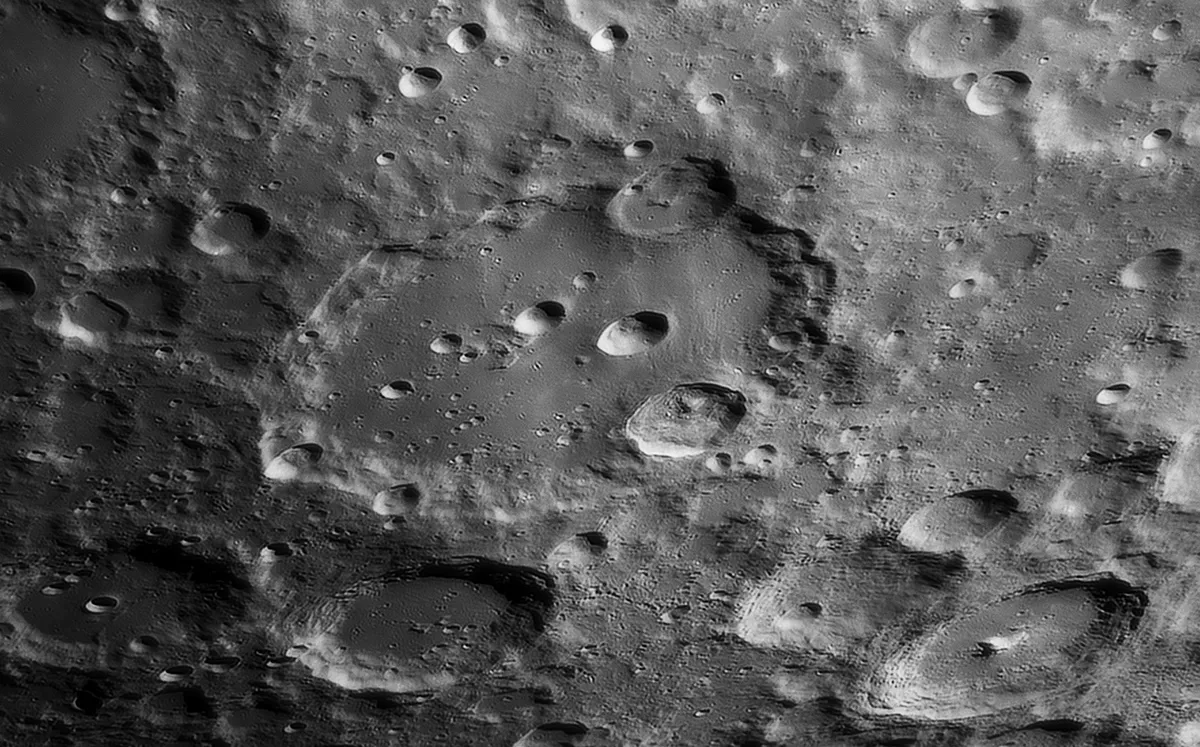
36. Crater Clavius
Clavius is one of those craters that astronomers love to go back to. It stretches over 200km across and its floor is covered in many smaller craters of varying sizes. The nights of 14, 15 and 16 September are ideal times to observe it.
37. Hadley Rille
Famous as one of the features explored by the Apollo 15 astronauts, Hadley Rille is also a great target to look for with a large telescope. Under suitable illumination it appears as a little meandering black line near the northern end of the lunar Apennines.
38. The Vallis Alpes
Cutting through the lunar Alps, the 150km-long Vallis Alpes is one of the most interesting features on the Moon’s surface. This valley can be spotted with even a small telescope.
39. Rupes Recta
Rupes Recta is perhaps best known as the Straight Wall. It is a 110km-long fault reaching over 270m above the lunar surface. Under the right illumination, it appears as a thin black line near to crater Birt.
40. A total lunar eclipse
A total lunar eclipse is a graceful affair that sees our Moon’s usually bright disc bathed in a deep coppery-red light – the result of it being immersed in the darkest part of Earth’s shadow.

41. Lunar ray systems
If you look at the Moon when it’s full you can’t fail to notice the bright ray systems that stretch across its surface. These lunar ray ejecta systems are material thrown out from asteroid impacts. The finest example is the network emanating from crater Tycho.
42. Craters Petavius and Langrenus
These craters are a bit of a double act, as their position on the Moon means they’re often well illuminated at the same time. Petavius is especially interesting as it has an intricate rille network within its walls.
43. A Moondog
Occasionally tiny ice crystals form in our atmosphere, within thin cloud, that refract moonlight, creating two faint rainbow-like patches of light either side of the Moon. These paraselenae or ‘moondogs’ are beautiful to behold.
44. Crater Theophilus
One of the grandest craters on the Moon’s near side, Theophilus is a great sight in a small telescope. It has impressive terraced walls and a fine cluster of central peaks. Look for it when it takes centre stage near the Moon’s terminator.
45. Schröter’s Valley
Another interesting lunar rille, Schröter’s Valley sits near the bright crater Aristarchus. To see it best requires a low angle of illumination from the Sun.
46. Crater Posidonius
Crater Posidonius sits on the northeastern shore of the Mare Serenitatis. It measures about 100km across and is a fine target for a small to medium aperture telescope.
Planets
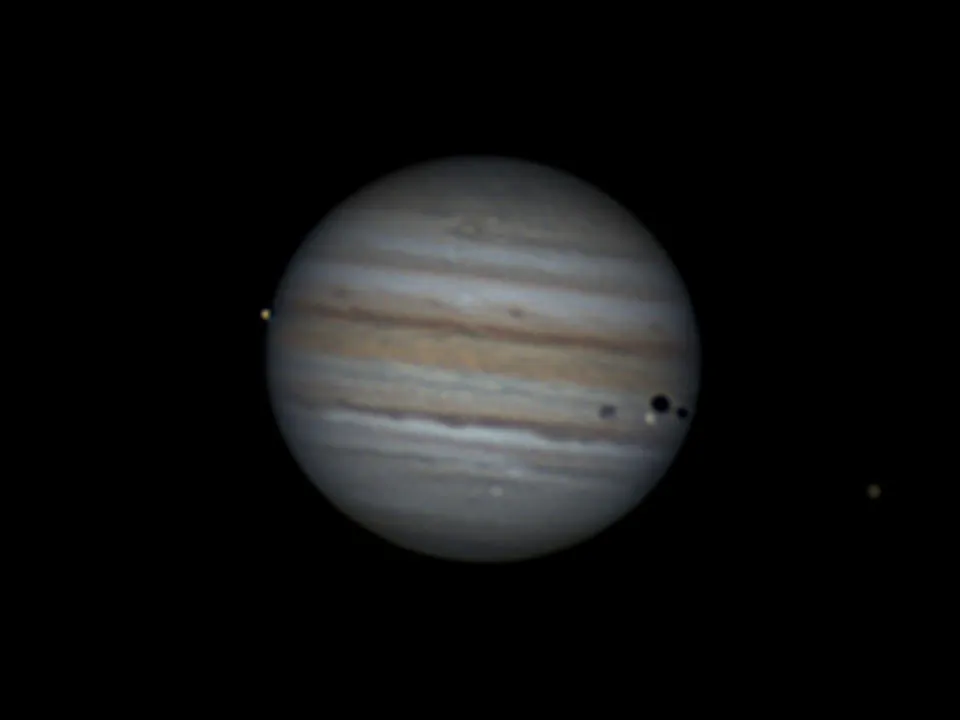
47. A jovian moon shadow transit
Few celestial events are as fascinating to watch as the shadow of a tiny moon moving across Jupiter’s disc – known as a Jovian shadow transit.
48. Jupiter's Moons
Look at Jupiter with binoculars and you should be able to spot the four Galilean moons: Io, Europa, Ganymede and Callisto. Use a telescope and you’ll be able to see them change position night by night much more clearly.
49. The crescent Venus
Just like our Moon, the planet Venus exhibits phases. Venus’s thin crescent phase is especially beautiful
– however be extremely careful not to accidentally point your scope at the Sun in the process of searching for it.
50. Saturn’s moons
If you’ve marvelled at Saturn’s rings through a telescope it won’t have escaped your notice that the planet is accompanied by a band of moons. Titan, the largest of these, is easy to see, and a large scope will show some of the others.
51. Jupiter’s Great Red Spot
Jupiter’s Great Red Spot is the most famous storm in the Solar System. But did you know it can be seen with a 6-inch telescope? Observe it when the planet is prominent in the night sky and you'll easily be able to make it out.

52. Mercury and Venus together
Since they are physically close to the Sun, Mercury and Venus generally also appear near to the Sun in the sky. The sight of them together just before sunrise or just after sunset – enveloped in the colours of twilight – is captivating.
53. The rings of Saturn
Four of the planets in the Solar System have ring systems, but it’s Saturn that sports the finest of them all. Saturns' rings can be seen with a small telescope, but are an incredible sight in a large one.
54. An asteroid
Asteroids such as Vesta appear as nothing more than a point of light through a telescope. While that may be the case, actually observing one with your own eyes is definitely a sight every astronomer should try and witness.
55. Mars at opposition
Our planetary neighbour is best seen around opposition – when, from our perspective, it is directly opposite the Sun in its orbit. With a small scope, look out for the dark markings on its surface and one of its polar ice caps.
56. Uranus and Neptune
Everyone likes a challenge, and observing Uranus or Neptune with a scope is certainly a fun one. To see their tiny blue-tinged discs well you’ll need a large aperture telescope and high magnification.
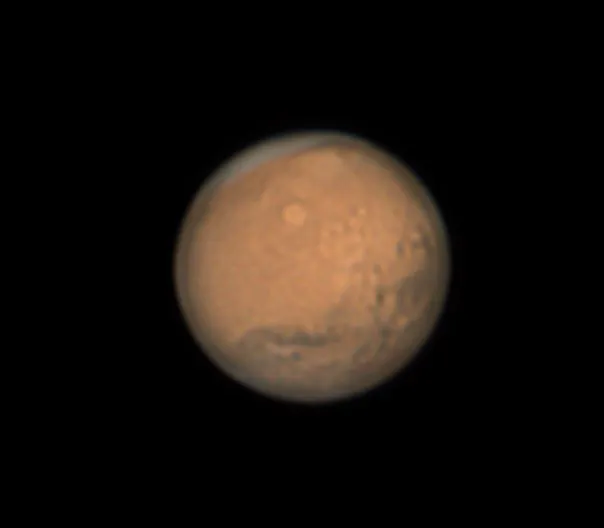
Deep-sky
57. Epsilon Lyrae
This wonderful star system – known fondly as the Double Double – can be seen with a modest telescope. It appears as two stars at first glance, but look closely and you’ll see each one is a pair of stars in itself.
58. The Pleiades
There’s no way that the finest celestial objects could not contain the Pleiades star cluster, M45. It’s easily visible with the naked eye and is a spectacular sight through a telescope at low magnification.
59. The Double Cluster
Located in the constellation of Perseus, this lovely duo of clusters can be seen with a good pair of binoculars. To see the Double Cluster at its glittering best, use a high- quality wide-field refractor.
60. M5
Globular cluster M5 lies in the constellation of Serpens. We recommend observing it through a large aperture telescope, like a big Dobsonian, to get that real 3D feeling.
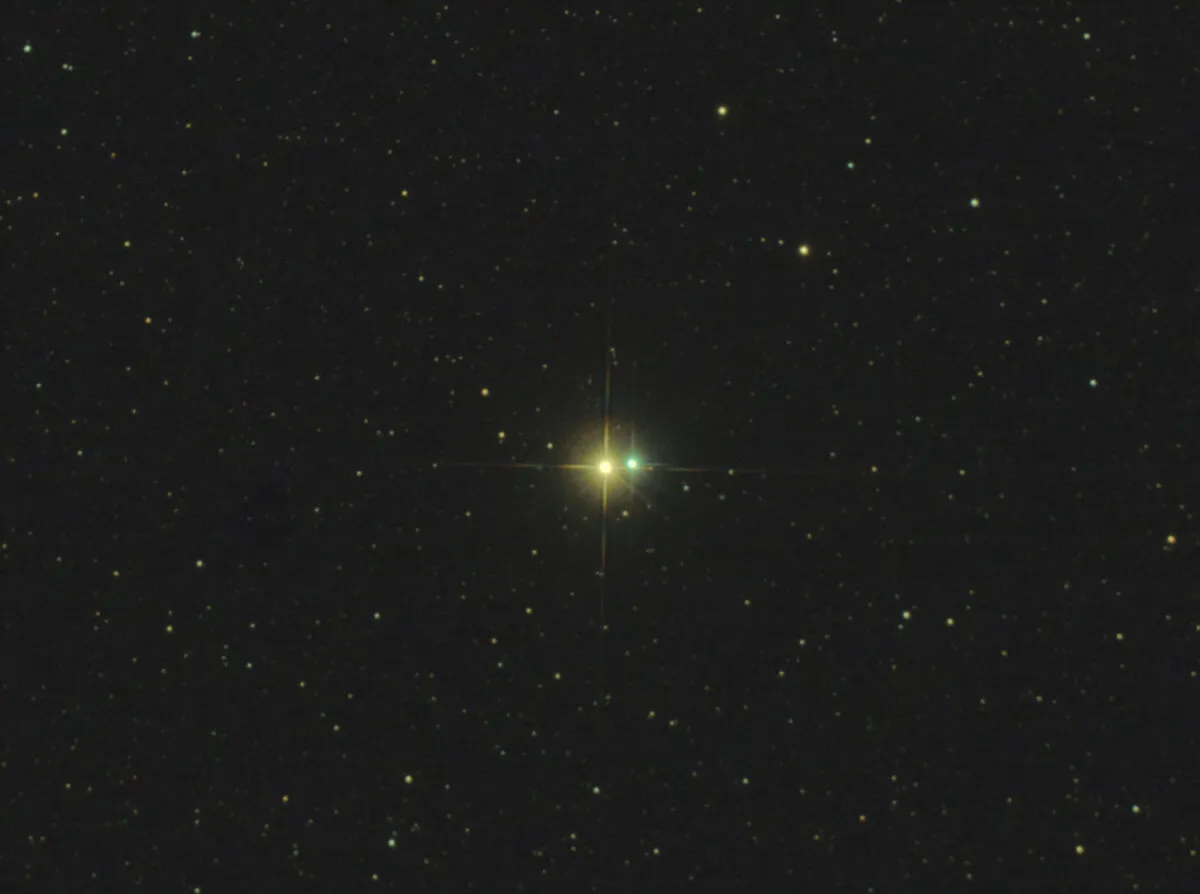
61. Albireo
To many, Albireo (Beta (β) Cygni) is the finest double star in the night sky. The two stars sit at the head of Cygnus, the Swan, and appear blue and gold through the eyepiece of a small telescope.
62. M22
M22 is one of the finest globular clusters to observe during the summer months. Set against the myriad stars of the rich Milky Way in Sagittarius, it’s a superb sight in a small telescope.
63. M13
Globular cluster M13 is located in the constellation of Hercules. You can actually spot it with just a pair of binoculars, but to see it as a ball of stars you’ll need a telescope.
64. M7
This interesting open star cluster is best seen from much more southerly latitudes than the UK. It lies in the constellation of Scorpius and is a particularly fine sight in a small telescope at low magnification.
65. The Hyades
You don’t need any equipment to take in the splendour of the Hyades open star cluster in Taurus. It appears as a big ‘V’ of stars in the night sky and is easy to find – nearby mag. +0.9 star Aldebaran (Alpha (α) Tauri) acts as a marker.
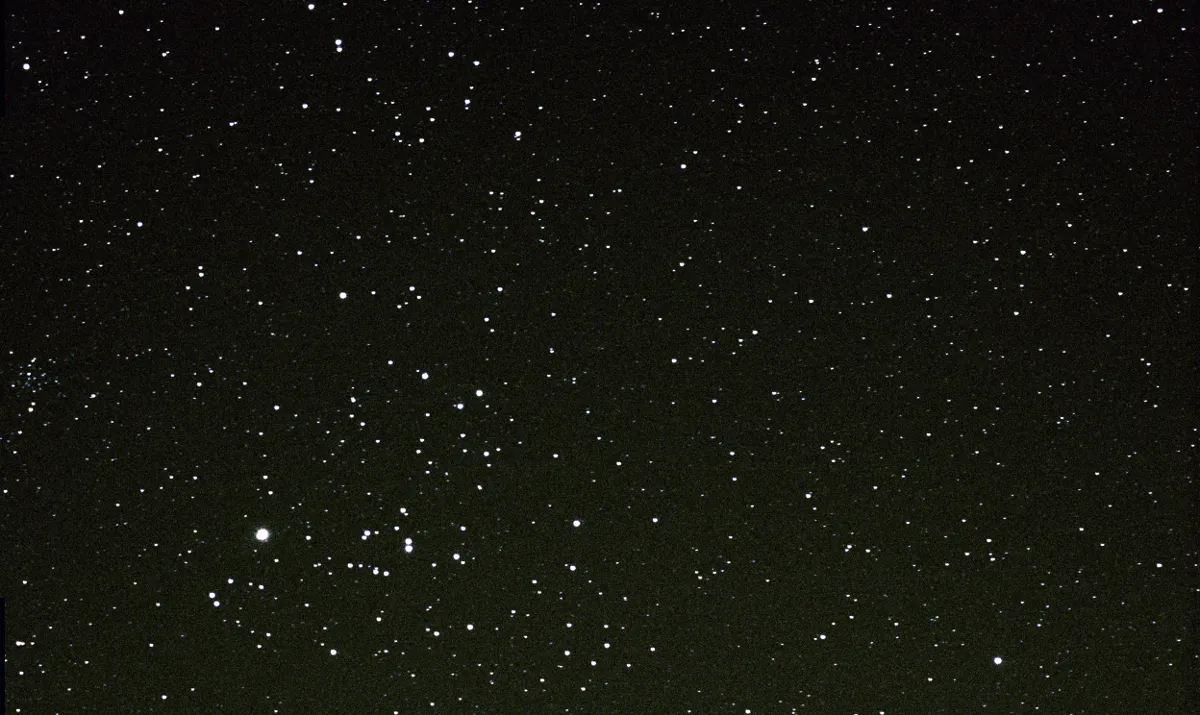
66. A cycle of a variable star
Some stars fluctuate in brightness over time. Many of these variable stars are visible in small scopes and observing a cycle of one is something of a rite of passage. Algol (Beta (β) Persei), is a great variable to start out with.
67. Mizar and Alcor
Mag. +2.2 Mizar and mag. +4.0 Alcor in Ursa Major make up one of the most well known double stars in the night sky. Your eyes should be able to see the two stars. Turn a telescope on Mizar and you’ll see it is also a double itself.
68. 47 Tucanae
Famous as one of the gems of the southern hemisphere night sky, this globular cluster is breathtaking in a large telescope. It’s located in Tucana, just under halfway between the mag. +2.8 star Beta (β) Hydri and mag. +4.2 star Zeta (ζ) Tucanae.
69. The Garnet Star
Stars come in a variety of colours. Some blaze with a bright white light, others with a blue glow. Mag. +4.2 Mu (μ) Cephei, the Garnet Star, is a wonderful shade of red. A small telescope will show it well.

70. IC 2602
IC 2602 is a beautiful cluster of relatively bright stars visible from the southern hemisphere. It sits within the band of the Milky Way in the constellation of Carina and is a magnificent target for a small telescope.
71. Auriga's Clusters
There are three particularly notable open clusters in Auriga, very close to each other, so we consider them as one sight here. M36, M37 and M38 can all be seen in binoculars, while a small telescope will show their many glittering stars beautifully.
72. M35
Sparkling open cluster M35 lies towards the feet of Gemini, the Twins. A small telescope will show it, but it’s a mesmerising sight in a big Dobsonian scope with a wide-angle eyepiece.
73. The Scutum Star Cloud
The Scutum Star Cloud is a particularly rich Milky Way star field in the constellation of Scutum. From a site with dark skies it’s easily visible to the naked eye, and it’s an utter joy to explore with a good pair of binoculars.
74. M6
Open cluster M6 is another one of our 100 objects that’s best seen from southern Europe and the southern hemisphere. Sitting near the tail of Scorpius, the Scorpion, it can be seen in binoculars with ease.

75. The Wild Duck Cluster
Open cluster M11 in Scutum is better known as the Wild Duck Cluster. It’s a lovely sight through a small telescope and a wide-angle eyepiece, as it sits against a backdrop of rich star fields.
76. Melotte 111
Melotte 111 is a scattered grouping of stars in the constellation of Coma Berenices, sometimes called the Coma Star Cluster. Under dark skies you can see it easily with the naked eye, but more detail is apparent through binoculars.
77. Omega Centauri
Globular cluster Omega Centauri is another jewel of the southern hemisphere skies. Located in Centaurus, the cluster is so big and bright that it can be seen with the naked eye. It is a wonderful sight in telescopes of all sizes.
78. The Coathanger
Some celestial objects look nothing like the things they are named after; the Coathanger asterism is a notable exception. This little collection of stars, set within the constellation of Vulpecula, really does look like something you'd hang your clothes on.
79. M44
Open cluster M44 in Cancer goes by many names, including Praesepe and the Beehive Cluster. It’s visible to the naked eye from a dark sky site and is a lovely sight in both binoculars and small telescopes.
80. Almach
Mag. +2.1 Almach (Gamma (γ) Andromedae) is a beautiful double star to look at through a small telescope. It lies between variable star Algol (Beta (β) Persei) and mag. +2.1 star Mirach (Beta (β) Andromedae)
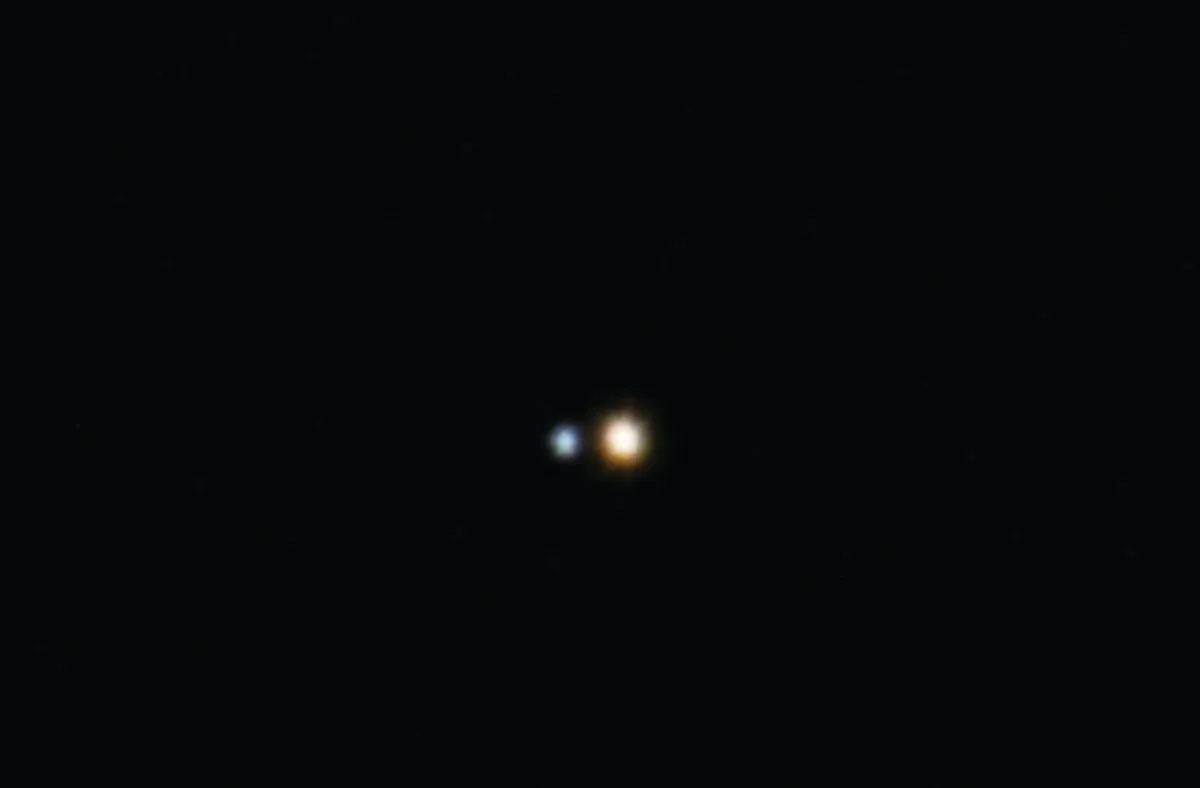
Nebulae
81. The Ring Nebula
The famous Ring Nebula is located in the constellation of Lyra. Its apparent diameter is relatively small, but most medium to large aperture telescopes will show it as an unmistakable faint ring of light.
82. The Orion Nebula
M42, the Orion Nebula, is perhaps the grandest nebula in the whole night sky. Lying in the sword of Orion, it’s visible to the naked eye from dark-sky sites and is a stunning sight in telescopes of all sizes.
83. The Dumbbell Nebula
The Dumbbell Nebula, M27, is a relatively bright planetary nebula in Vulpecula. It’s a fascinating object to examine with a large aperture telescope, when its ‘dumbbell’ shape becomes very apparent.
84. The Lagoon Nebula
The Lagoon Nebula, M8, is one of the brightest nebulae in the northern hemisphere night sky and a great object to observe in summer. Located in Sagittarius, it’s easily visible in binoculars from a site with dark skies.

85. The Coalsack Nebula
The dark Coalsack Nebula is a conspicuous sight, silhouetted against the bright starry backdrop of the southern hemisphere Milky Way. It’s easy to find, sitting next to the famous Southern Cross.
86. The Horsehead Nebula
The Horsehead Nebula is a dark nebula in Orion. We only see it because it is silhouetted against a brighter background of glowing nebulosity. You’ll need a large aperture instrument and very dark skies to make it out.
87. The Crab Nebula
The Crab Nebula, M1, is a supernova remnant in Taurus. It can be spotted with a small telescope, but it's best seen through a really large aperture instrument – only then does its fascinating texture start to emerge.
88. The Carina Nebula
The Carina Nebula, NGC 3372, is a gem of the southern sky. From sites with inky black skies it can be spotted with the naked eye. It looks marvellous through a small telescope.
89. The Veil Nebula
Like the Crab Nebula, the Veil Nebula is a supernova remnant – the scattered glowing remains of an exploded massive star. You will find it in Cygnus, near to mag. +2.5 star Epsilon (ε) Cygni.
90. The Tarantula Nebula
The Tarantula Nebula is a huge star-forming region within the Large Magellanic Cloud, a galaxy visible from the southern hemisphere. A small scope will easily reveal this arachnid lurking among the galaxy’s stars.

91. NGC 2392
NGC 2392 is a planetary nebula in the constellation of Gemini. Through a large telescope it appears as a little fuzzy disc of light.
92. The North America Nebula
NGC 7000, the North America Nebula in Cygnus, can be a challenge to observe. Located close to mag. +1.3 star Deneb (Alpha (α) Cygni), you will need extremely dark, transparent skies to spot it.
93. The Whirlpool Galaxy
Designated M51, the Whirlpool Galaxy is a spiral galaxy located in Canes Venatici. It can be found not far from mag. +1.9 star Alkaid (Eta (η) Ursae Majoris). You’ll need a large telescope to see its spiral arms clearly.
94. Bode's Galaxy and Cigar Galaxy
These galaxies in Ursa Major are very close to each other in the sky, so we’re treating them as one sight here. If you observe Bode's Galaxy and the Cigar Galaxy with a small telescope and a low magnification eyepiece, you'll be able to see them in the same field of view.
95. Markarian’s Chain
Markarian’s Chain is a stunning string of galaxies on the border between the constellations of Virgo and Coma Berenices. The chain consists of eight galaxies: M84, M86, NGC 4435, NGC 4438, NGC 4458, NGC 4461, NGC 4473 and NGC 4477.

96. The Andromeda Galaxy
From a dark-sky site M31, the Andromeda Galaxy, is visible to the naked eye. Binoculars show its elliptical shape clearly, while larger scopes will begin to show the dust lanes that stretch across its disc.
97. Sculptor Galaxy
The Sculptor Galaxy, NGC 253, is technically visible from the UK, but latitudes farther south have a better view of it. Unsurprisingly, it is located in the constellation of Sculptor, about 7º south of the mag. +2.0 Diphda (Beta (β) Ceti).
98. The Leo Triplet
The Leo Triplet, composed of the galaxies M65, M66 and NGC 3628, lies about halfway between mag. +3.3 star Chertan (Theta (θ) Leonis) and mag. +6.6 star Iota (ι) Leonis. Medium to large telescopes will show it clearly.

99. The Triangulum Galaxy
M33 the Triangulum Galaxy can just be glimpsed with the naked eye under dark skies with good transparency. It sits between mag. +2.2 star Hamal (Alpha (α) Arietis) and mag. +2.1 star Mirach (Beta (β) Andromedae).
100. The Sombrero galaxy
The Sombrero Galaxy, M104, is a fine sight through a large telescope on a clear spring night in the UK. It’s famous for the dark dust lane that cuts across it, giving it the appearance of a sombrero.
What do you think of our list? What would you have included? Let us know by emailing contactus@skyatnightmagazine.com
